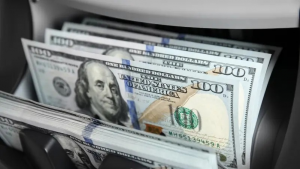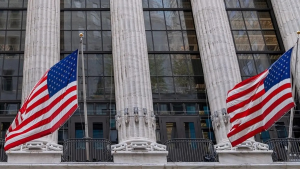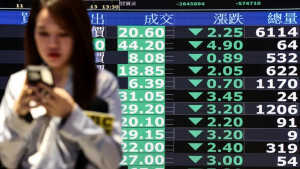U.S. producer prices rose by more than expected in June, piling more pressure on the Federal Reserve to raise interest rates to bring inflation down.
The price of goods leaving the factory gate rose by 1.1% from May, more than the 0.8% expected, and an acceleration from 0.9% in May. May's figures, too, were revised up a shade.
The usual suspects of gasoline and other energy costs were again prominent. Over half of the June increase was attributable to gasoline prices, which leaped 18.5% after a brief respite in May. That suggests that profit margins, which have been the key driver of the PPI since the start of the pandemic, were only able to inch higher in overall terms because of a sharp expansion of margins at the country's oil refiners.
Prices for motor vehicles and natural gas also rose, the BLS said.
Excluding volatile components, the core PPI rose only 0.4%, a slight slowdown from May's 0.6%, helped by declines in the prices for iron and steel scrap and jet fuel.
As such, the annual rate of producer price inflation rose to 11.3%, having fallen for each of the last two months. The annual core rate fell to 8.2% from an upwardly revised 8.5%.
Producer prices are often seen as an indicator of 'pipeline pressure' in the broader inflation picture, a sneak peek into tomorrow's consumer inflation figures. That correlation has broken down somewhat, however, as final prices have come to be influenced more by the price of imports. Even so, the numbers make for more bad reading for the Federal Reserve, a day after consumer inflation hit a 41-year high of 9.1%.
However, analysts saw signs that the broader inflation dynamic may be weakening, as consumers' need to spend more on energy reduces the ability of other sectors to demand higher prices. Ian Shepherdson, chief economist at Pantheon Macroeconomics, noted that the 10.2% annualized rate of margin growth in the second quarter was the smallest increase since the first quarter of last year, and less than half the pace of Q1 2022.
"As inventories rise and supply chain pressures ease, we expect an outright decline in margins, so the year-on-year rate should fall below zero next spring, dragging down both core PPI and consumer inflation," Shepherdson said.
Separately, the Labor Department announced that initial jobless claims crept up to a five-month high of 244,000 last week, suggesting that the pace of layoffs may be picking up and that the process of rehiring is not going quite as smoothly as in previous months. That problem still seems relatively contained, however, as continuing claims for jobless benefits fell by more than expected 40,000 to 1.331 million.
Jobless claims data at this time of year are, in any case, typically dominated by maintenance periods at the country's largest auto factories












